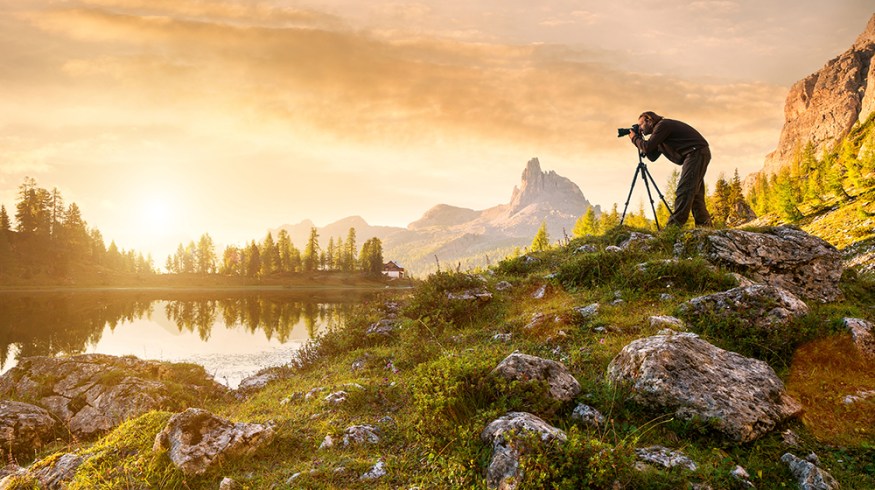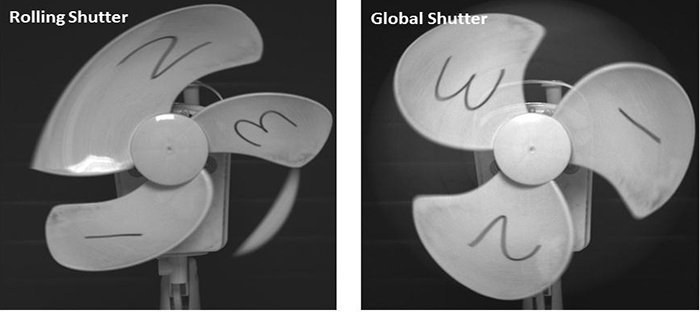
How Do Camera Shutters Work?
We slow down time and take a look at how different camera shutters work.
There’s nothing like the sound of a professional camera shutter. It’s become so synonymous with photography that digital cameras and phone cameras often have a fake sound effect to make the photography experience more authentic.
But have you ever wondered about the process behind that magical sound effect?
How do DSLR shutters work?
When it comes to a DSLR camera shutter there are 3 basic mechanisms: the mirrorbox, the bottom door, and the top door. When you look through a DSLR view finder you are essentially looking through a series of mirrors that get their light directly from the lens. When you click the shutter button that system of mirrors flips upwards to allow light to pass to the sensor. This is why the viewfinder goes black for a short amount of time when taking photos.
Once the mirror is flipped upwards a small door will move from top to bottom exposing the sensor beneath. After that another door will fall down, covering up the entire sensor. This process can vary in time depending on the length of your shutter speed. Sometimes a shutter speed can be so fast that your camera sensor won’t be entirely exposed at any one time.
After the second door closes your mirror will fall back into place. The doors will then reset to their original positions underneath. This entire process from mirror up to mirror down is known as an actuation. A typical DSLR can withstand over 100,000 actuations in its lifetime.
The following is a graphic example of 1 full actuation:
How do mirrorless camera shutters work?
Unlike DSLRs, mirrorless cameras don’t use a mirror box or pentaprism to project light directly into the viewfinder. Instead, when using a mirrorless camera the sensor is perpetually exposed to incoming light by default with nothing in-between. This is why mirrorless cameras use either an LCD screen or an electronic viewfinder to monitor what is coming through the lens.
As soon as the user hits the shutter button a door will swing up to cover the sensor. Once covered up the sensor will begin exposing. The door will then swing down to expose the sensor to light. After that another door will swing down to cover the sensor. The sensor will then stop exposure and the doors will reset.
Here’s an example of how a mirrorless camera works:
Why do cameras have mechanical shutters anymore?
Before the existence of digital sensors it was vital your camera have a mechanical shutter. This is because you can’t simply turn film on or off like a digital sensor. Pre-developed film is light sensitive, meaning any exposure to outside light would severely damage your images. However, in the age of digital photography the landscape is certainly different. Modern sensors are fully capable of taking photographs without a mechanical shutter.
 Image from Shutterstock
Image from Shutterstock
Smaller consumer cameras like point-and-shoots and phone cameras are all examples of shutterless cameras. Shutterless cameras tend to have more image noise in the image than their traditional shuttered counterparts. This is because shutterless cameras constantly send power to the sensor. When a user hits the shutter button the sensor is flooded with more power and the image is captured and if you’re familiar with ISO you know that more power equals more noise.
We will likely see professional shutterless cameras in the future, but for now they simply are too grainy/noisy for most high-end professional photography.
How do shutters work when capturing video?
When shooting video on a the shutter process is much different. Because a typical still camera can only activate it’s shutter mechanism about 6 times per second, the physical shutter doors are far too slow to shoot video (which is typically shot in 24 or 30 fps). Instead, when shooting video or in the live-view mode your shutter doors and mirror are left open, leaving your sensor perpetually exposed. Instead of relying on mechanical processes, the ‘shutter speed’ when shooting video is only a reference to a timed amount of power that goes through the sensor. This is known as an electronic shutter. After each frame is captured the electronic shutter resets.
What is a global shutter?
Although the name would insinuate that it is simply a type of shutter process, a global shutter is more a camera sensor related feature. When it comes to camera sensors there are two main categories that you need to know CMOS and CCD.
CMOS sensors are more common among consumer to pro-sumer cameras, but they are also more problematic. This is because CMOS sensors read pixel information from the top left of the sensor to the bottom right. This is a problem because if your subject is incredibly fast and moves position during capture you will get warped images. This is known as rolling shutter and it can produce some pretty annoying ‘jello’ effects, especially when shooting video.

Image from Andor.com
On the other hand CCD sensors, or global shutters, will record the entire frame at once, very similar to a film camera. This eliminates warping, leaving you with a more pleasing image.
What is a rotary disk shutter?
Rotary disk shutter only pertains to actual film (movie) cameras. As you probably already know, a film camera works by exposing 24 individual film frames to light per second. The result is fluid motion that gives the illusion of movement. As you can imagine, the mechanical processes already covered in this article, known as focal-plane shutters, are far too complex and time consuming to be performed 24 times per second. Instead a film camera uses a rotary disk shutter.
This shutter looks very similar to a fan. In short, the Rotary Disk rotate on the inside of the camera body, exposing the film to light then covering it up again with the blade of the disk. The rotary disk process works in 3 steps: under the cover of the disk the camera film would move into place, the disk would allow light in, and the disk would cover the frame. Repeat this process 24 times per second and you have yourself a moving picture.

Image from Wikipedia
The thing that makes rotary disk shutters truly unique is the way in which the shutter speed is calculated. In modern cameras you can select the exact shutter speed you want for your image, but in traditional film (movie) cameras you have to calculate your shutter speed yourself. Rotary disks have the shutter angle, or the size of the pizza slice (see chart), listed on their blades. DP’s can then go in and determine what the shutter speed is by calculating the shutter angle with the frame rate.
For example, if you were shooting a film at 24 fps and had a rotary disk with a shutter angle of 180 degrees your shutter speed would be 1/48 or double 24 fps. The following diagram may help you get a good idea of how this process works.
If you are looking to shoot on film in the near future there are a lot of really good online resources to help you figure out your shutter speed. It’s also not uncommon to see shutter speed displayed by shutter angle when shooting on high-end cinematography cameras.
What in the heck is a leaf shutter?
A leaf shutter is a shutter that functions inside of a lens. Instead of acting like a door or a fan, a leaf shutter works a lot like a lens aperture.
 Image from KernPhoto
Image from KernPhoto
You won’t find leaf shutters in everyday cameras. Typically they are only found in medium format high-end photography cameras. They can function at higher flash sync speeds (up to 1/1600) making them great for anyone who wants to shoot outdoors at a low f-stop with a strobe. Because these lenses are hand crafted, not manufactured on an assembly line, they tend to be incredibly expensive.
Shutters In-Action
The following videos showcase various camera shutters in slow motion. Note how violent the process is on the photography equipment. It’s amazing that the camera shutters don’t break more often.
Nikon D4 (DSLR)
Canon 7D (DSLR)
Fujifilm x-PRO1 (Mirrorless)
Note how this Fujifilm mirrorless camera doesn’t have a mirror or pentaprism. It is just a constantly exposed sensor that is covered up only during the photo capturing process.
Want to learn more about camera shutters? Check out a few of the following resources:
- How Shutter Works – C.R.I.S. Camera Services
- How Shutter Speed Works – How Stuff Works
- How Does Shutter Work When Shooting Video – Photo Stack Exchange
- Global Shutters – Digital Bolex
- Why Leaf Shutter Lenses Matter – Kern Photo
Do you think mechanical shutters are here to stay? Share in the comments below.








